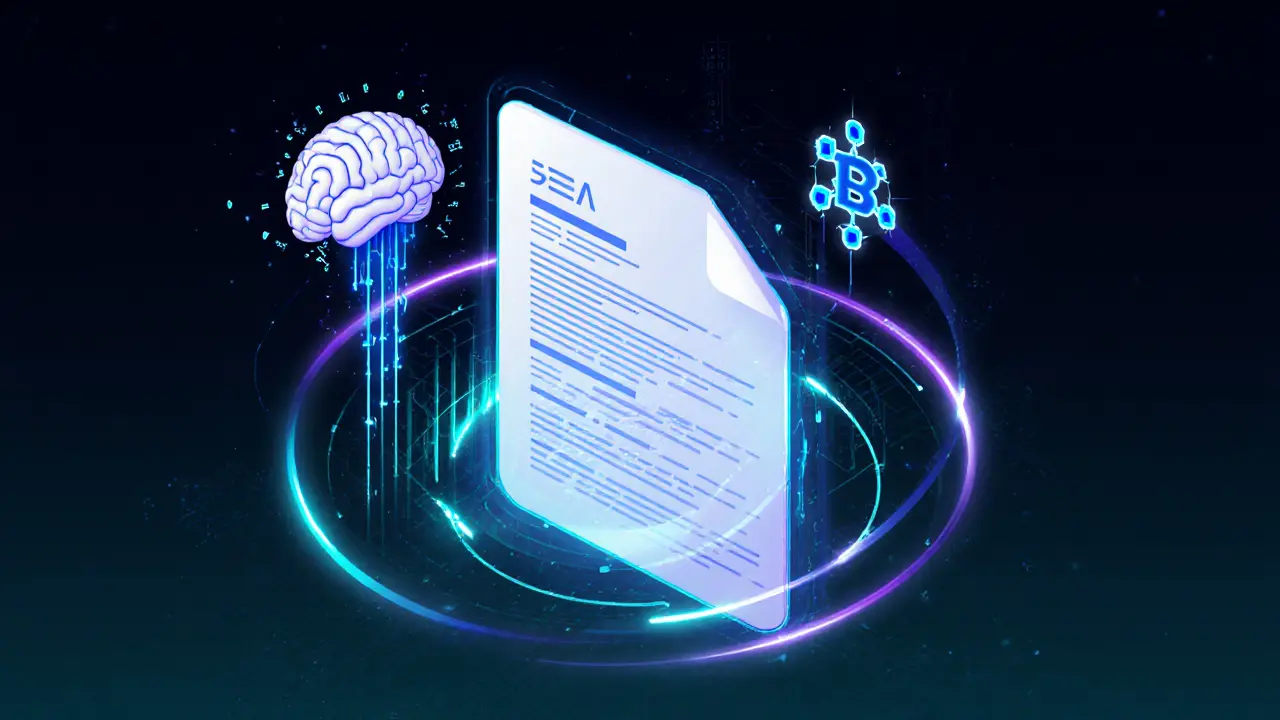Smart Contracts: How They Power Tokens, DeFi & Crypto Regulation
When working with Smart Contracts, self‑executing code that runs on a blockchain when preset conditions are met. Also known as blockchain contracts, they automate transactions without middlemen. The most popular platform for these contracts is Ethereum, a public blockchain that enables developers to deploy decentralized applications, which fuels the rise of Decentralized Exchanges, peer‑to‑peer marketplaces that run entirely on‑chain. Meanwhile, the DeFi, financial services built on smart contracts sector relies on Tokenomics, the economic rules governing how tokens are created, distributed and incentivized to attract users and create liquidity.
Why smart contracts matter
In short, smart contracts are reshaping the crypto landscape by removing trust bottlenecks. A token launch, for example, is just a contract that mints a fixed supply and assigns it to early investors. Airdrops use the same mechanism to send free tokens to eligible wallets without manual paperwork. This automation shows up across the posts on our site – from the PREME token guide that explains ERC‑20 tokenomics to the FIWA airdrop overview that walks readers through claim steps.
Regulators are paying attention, too. The US MSB guide, the Thai exchange licensing paper, and the global sandbox overview all highlight how compliance rules affect the way contracts are written and audited. When a jurisdiction requires KYC data to be stored off‑chain, developers must embed verification hooks in the contract code. That adds a layer of legal safety while preserving the core “code is law” principle.
Security is another hot topic. Many of the exchange reviews – Bitroom, Koinde, PrimeBit – call out the need for audited contracts before users trust a platform. Audits look for re‑entrancy bugs, integer overflows, and improper access controls. A well‑audited contract reduces the risk of exploits that could drain funds from a DEX or a DeFi lending pool.
Beyond finance, smart contracts enable novel use cases like GameFi airdrops (SHILL token) or NFT social platforms (WOOP). Each of these projects builds on the same basic building blocks: a contract that defines ownership, transfer rules, and reward logic. Understanding those blocks helps you evaluate any new project, whether it’s a token with deflationary taxes like SafeMars or a privacy‑focused DeFi platform like Inkryptus.
All of this ties back to the core idea that smart contracts are the glue holding the crypto ecosystem together. Below you’ll find a curated collection of articles that dive deeper into licensing, token design, exchange safety, and emerging trends. Use these resources to sharpen your knowledge, spot opportunities, and stay ahead of regulatory changes.
Blockchain Powering Modern Energy Markets
May 12, 2025, Posted by Ronan Caverly
Explore how blockchain transforms energy markets with peer-to-peer trading, smart contracts, tokenized RECs, and future trends, backed by market data and implementation guidance.
 MORE
MORE
Smart Contracts 2025: Shaping the Future of Decentralized Apps
May 10, 2025, Posted by Ronan Caverly
Explore how AI, cross‑chain tech, and DAOs are reshaping smart contracts in dApps, with practical steps for developers and businesses looking ahead to 2030.
 MORE
MORE
Blockchain for Supply Chain Transparency: How It Works & Benefits
Oct 12, 2024, Posted by Ronan Caverly
Discover how blockchain creates transparent, tamper‑proof supply chains, the benefits over traditional systems, real‑world case studies, challenges, and a step‑by‑step adoption roadmap.
 MORE
MORE
SEARCH HERE
Categories
TAGS
- crypto exchange review
- decentralized exchange
- cryptocurrency
- crypto coin
- smart contracts
- tokenomics
- cryptocurrency exchange safety
- crypto exchange
- cryptocurrency airdrop
- crypto airdrop
- cryptocurrency exchange
- CoinMarketCap airdrop
- crypto airdrop guide
- blockchain token distribution
- DeFi
- crypto exchange scam
- Ethereum
- cross-chain interoperability
- ERC-20
- GameFi
